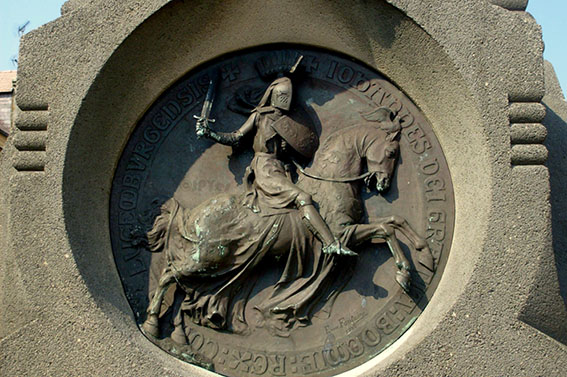Home > History > 100 years' war
The 100 years' war
The Kingdom of England opposed the Kingdom of France for more than 100 years, from 1337 to 1453. This led to several conflicts interspersed with periods of truce.
The treaty that ended the Hundred Years' War was signed in 1475 in the village of Picquigny, near Vignacourt, by King Edward IV of England and King Louis XI of France.
![]()
Situation
King Edward III of England claimed the crown of France. He landed in Normandy on July 12, 1346, in Saint-Vaast-la-Hougue. He passed through the city of Rouen to reach Flanders.
Philippe VI went to meet him, and they fought in Crecy. Edouard III came out victorious from this battle and took over Calais.

Jean de Luxembourg is sculpted on the memorial in Crecy-en-Ponthieu.
The tomb of John I of Bohemia is in the Notre Dame cathedral in Luxembourg.
Photo credit: Mr. Jean-Paul Sottiaux, https://monptitbonheur.com
The black death invaded Europe in 1348, and entire villages disappeared. The famine spread the following year because the fields were no longer cultivated. A truce lasting several years had emerged.
Jean Le Bon was taken prisoner at the Battle of Poitiers in 1356 and then transferred to London. In 1360, the Treaty of Brétigny delivered Calais to the English.
Key dates
- The Ecluse battle - June 24, 1340
- The Battle of Crécy, near Abbeville - August 26, 1346
- Poitiers - September 19, 1356
- Cocherel - May 14, 1364
- Agincourt / Azincourt - 1415
- Brétigny, next to Chartres - May 08, 1360,
- Auray - September 29, 1364,
- Troyes - 1420,
- Orléans - 1428,
- Treaty of Arras - 1435,
- Formigny - 1450,
- Castillon 1453,
- Picquigny 1475.
